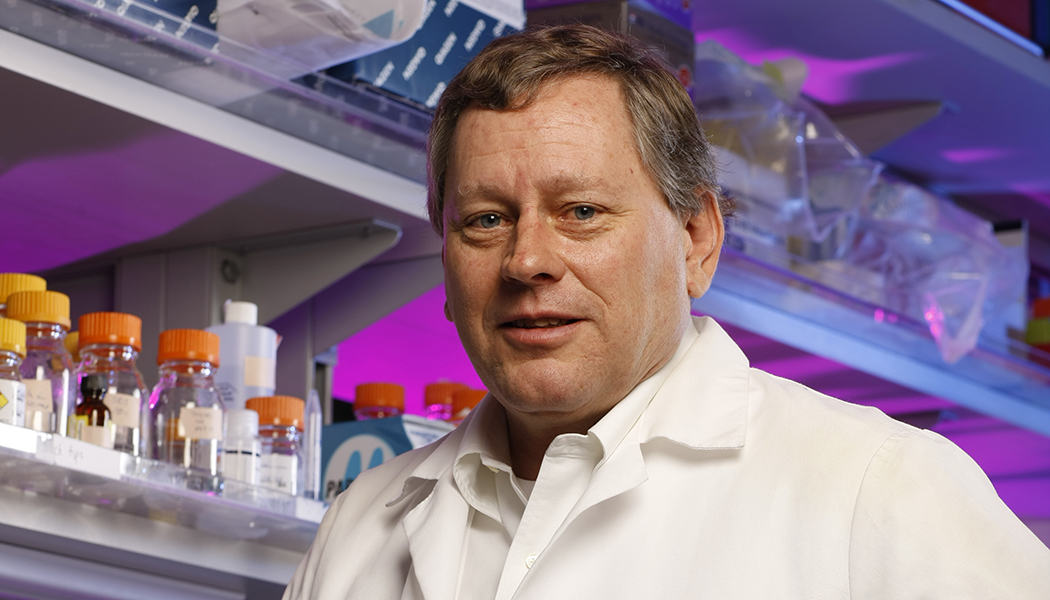Dr. Webster Cavenee: Oddball Ideas

When Dr. Webster “Web” Cavenee first introduced the idea of genetic tumor suppressors in 1982, it took to the air like a lead balloon.
“I got a lot of blank looks,” he recalls. “A lot of angry ones, too.”
How times change. Tumor suppressor genes, also called antioncogenes, are now an undisputed scientific fact, and Cavenee won the 2007 Szent-Györgyi Prize for Progress in Cancer Research for his work. As their name suggests, these genes act like a natural break against tumor formation. And it makes sense that they were there to begin with: cancer has been with humanity for a long time; a fossil 1.6 million years old shows that an early Homo erectus suffered from bone cancer. Considering this long lineage, it should come as no surprise that the process of natural selection would, over the course of time, promote some sort of built-in defense against the disease at a genetic level.
“Put simply, these genes dampen the activity of genes that drive cellular growth. But when they are mutated, as they are in cancer or people who are predisposed to cancer, it’s like you have an accelerator, but no break,” describes Cavenee.
DNA sequencing can easily pin-point the genes Cavenee was exploring, but in 1982, such technology was decades away, and many of the paradigms that govern modern oncology was only just then taking shape: Oncogenes — genes that have the potential to cause cancer — had been definitively identified only in 1979; that cancer can run in families was not absolutely proven until the early 90s. The human genome was only mapped in 2001, and roughly at that.
And Cavenee initially had no interest in cancer; when he entered college, the man who would become one of the world’s most lauded oncologists picked nuclear physics as his field of choice.
“But I quickly found out that I was mathematically challenged,” Cavenee says with a laugh. “It was pretty obvious.”
Yet kismet is a funny thing; because of his however brief foray into nuclear physics, Cavenee was introduced to the idea of mutation, which is what cancer is. From there, it was off to the races: Cavenee formally entered oncology in 1977, published his paper on tumor suppressor genes in 1983, and, several awards later, now serves as Director of Strategic Alliances in Central Nervous System Cancers for Ludwig Cancer Research and is a Distinguished Professor at the University of California in San Diego. And there are no laurels being rested upon here; despite his obvious accomplishments, when asked what his career highlight is, Cavenee replies that what makes him most proud is the success of his former students and fellows as they established themselves. As for himself, Cavenee, with continued help from bodies like NFCR, continues to make strides in cancer research.
“I am interested in how the interplay of genetic and epigenetic regulation influence tumor behavior,” he says, “especially as manifest as resistance to anti-cancer therapeutics.”
If that sounds complicated, it is part of his drive to transform cancer from a lethal disease to a manageable, chronic one. From there, Cavenee predicts, cancer will be cured. Today, Dr. Cavenee works on the underlying basis on brain tumors, developing therapies to attack them and new ways of performing clinical research. All it takes is a few more oddball ideas (Cavenee’s own term); tumor suppressor genes were just that in 1982. Who is to say the extreme ideas of today may very well pay off in the future?
References
Perry, David. (2019). Telephone interview with Webster Cavenee.











